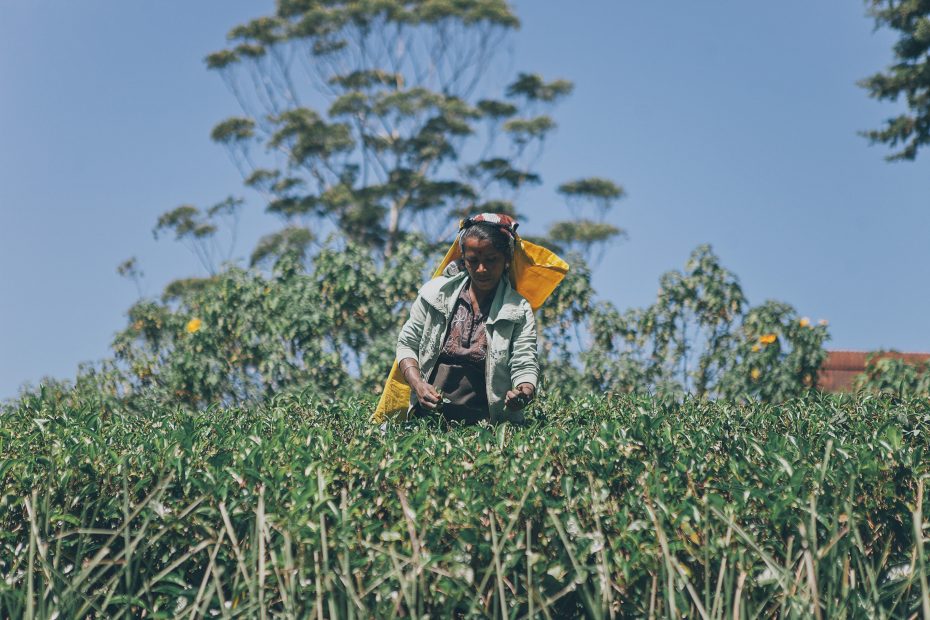Nuwara Eliya is one of my favorite Sri Lankan teas, at least for the time being. To many it is known as the “champagne of Ceylon teas.” It is a black tea with a delicate, slightly citrusy and floral flavor. This is because it is a tea grown at high altitude (about 2000 m). Altitude is important for the flavor and fragrance of tea, and in Sri Lanka this factor is particularly evident.
In fact, teas from this island are divided into low grown, mid grown and high grown, that is, grown at low altitude, mid altitude and high altitude.
What does Nuwara Eliya (pronounced “nurelia”) mean? It is a region of the island, one of the most famous for growing tea (black but also a valuable white tea). As with Assam, Sri Lankan teas are therefore named after the area of production. On the packaging then you can find indications of the name of the company and the abbreviations OP, BOP, etc., which as we have seen again for Assam serve to let us know the appearance of the leaves (broken, with buds,…).
In the case of Nuwara Eliya, the altitude translates into cool temperatures and slow growth, which favors the development of fruity notes in this tea.
How to prepare Nuwara Eliya
As I often repeat on Facebook, I am a lover of green teas. There are exceptions, however, and Nuwara Eliya is one of them. To really enjoy it, however, I have to shorten the brewing time to 2 minutes and 30 seconds. If you also prefer more delicate flavors, follow my directions. Otherwise, here are the condensed parings:
Amount: 2-3 g per cup (a little less than a tablespoon of leaves)
Water temperature: 85 – 90° C (water must be natural mineral water with low fixed residue)
Infusion time: 3 minutes. If you like strong, English-style tea, you can extend the infusion up to 5 minutes.
The citrus notes of Sri Lankan teas generally go well with a slice of lemon.
Ceylon Tea
Why are Sri Lankan teas also called Ceylon tea? You need to know that European influences followed one another on the island, until British rule from 1796. The country was renamed Ceylon and coffee cultivation was started to meet the demand of drinkers from all over Europe.
Everything was going swimmingly until 1867 when the epidemic of the so-called coffee blight destroyed the plantations. At that time, a Scotsman, James Taylor, assistant manager of the Loolecondera coffee plantation, was successfully experimenting with tea plant seeds he had purchased in India. Thus the first tea plantation was born, exactly 150 years ago.
Taylor’s success drew the attention of an entrepreneur, also from Scotland, Sir Thomas Lipton, who took advantage of the devaluation of coffee plantations to convert them back to tea plantations. But that is another story… The fact remains that today Sri Lanka is the world’s fourth largest producer of tea.
Nuwara Eliya means “above the clouds” and is tea grown at the highest altitudes in all of Sri Lanka. This central area of the island was virtually uninhabited when the first British explorers arrived in 1818. Initially, given the breathtaking scenery and pleasant temperatures, the place became a resort area for British settlers seeking cooler weather during the warmer months. Only later, in 1875, did tea cultivation begin.
Nuwara Eliya tea pairings
This Sri Lankan tea is perfect at breakfast but also in the afternoon for a classic 5 o’clock tea. Colé we said, goes well with citrus fruits so pair it with a lemon or orange cake, but it is also great with a slice of carrot cake.
Not only that. Nuwara Eliya also lends itself well to savory breakfasts or a traditional afternoon tea with bread, jam and sandwiches. Pair it with light cured meats such as turkey rump or ham or a smooth rosemary flatbread.
Nuwara Eliya: what to see
If you visit this area, you cannot miss a visit to a tea plantation. The most famous (but I am told it is also very commercial) is the Pedro Tea Estate.
This region is then famous for natural beauty. In particular, they recommend Hakgala Gardens and Galway’s Land National Park.
To the pleasure of wine tasting and adventure, you can combine a bit more cultural and spiritual part by visiting the Hindu temple Seetha Amman.
